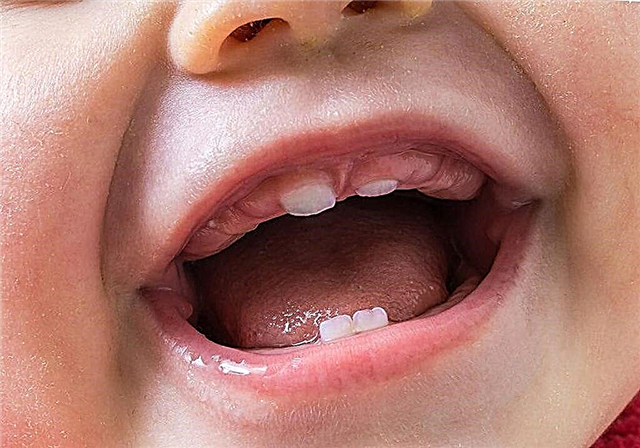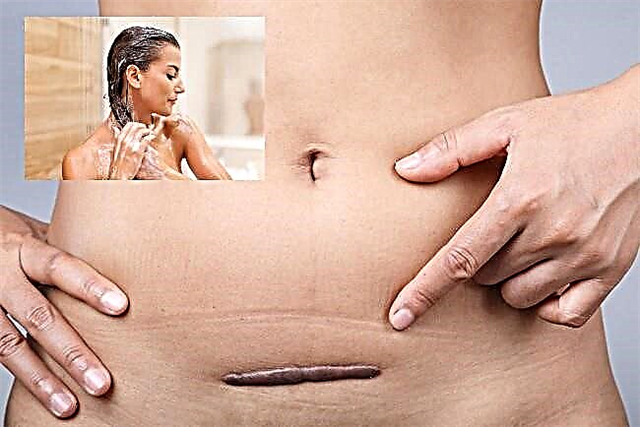Pear is a very healthy fruit, so it is one of the first to be introduced into the diet of babies. It is important to know how to correctly introduce the fruit in order to avoid unpleasant consequences that can manifest itself in the form of allergies, cause heaviness in the stomach, and also cause colic.

Until the age of six months, children eat only mother's milk, and then they will get acquainted with new food. Babies who are on artificial nutrition are introduced to complementary foods earlier (from 4-5 months). Acquaintance with new food begins with vegetable and fruit purees. Fruits are good for these purposes - apples and pears. Every mother is obliged to know what is the use of pears and in what form to start introducing into the child's diet.
How many months should you start introducing into the diet?
A child can try a pear after an apple. Children who are on GV get acquainted with the fruit at 7 months.
Artists can taste the pear at 5-6 months.
From the forums:
from 5 months grated pears and apples. ate with pleasure. Gnawing can also be given, but be careful not to bite off a large piece and choke. That is, to sit next to. Before 4 months is not worth it. Better closer to 6 months. The gastrointestinal tract is not yet formed.
From about 5 months, the child can be given pear juice or pear puree. Or, as in the old days - they were wrapped in small gauze. a piece and instead of a nipple was given to the child.
The benefits of the fruit
Pears are rich in substances that are useful and necessary for the body:
- tannins;
- fructose, sucrose and glucose;
- carbohydrates;
- organic acids;
- pectins.
They contain a lot of vitamins, in particular vitamins of group B, A, C, PP. When these juicy fruits are consumed, the human body is enriched with zinc, molybdenum, copper, fluorine.
The fruit is well absorbed and has the following effect on the body:
- helps to improve mood;
- increases tone;
- normalizes heart function;
- relieves nervous tension.
Pear also has expectorant, antiseptic, antipyretic and diuretic properties. Rarely causes allergic reactions.
Minuses
Possible and negative consequences of eating a pear:
- fresh fruit can cause stomach heaviness;
- can not be used for colitis and gastritis.
What effect does it have on a child's stool?
The pear strengthens the stool, therefore it is recommended for use in case of diarrhea and other gastrointestinal disorders, accompanied by liquefaction of feces. Overripe fruits, on the other hand, can cause indigestion and have a laxative effect.
How to give?
The baby's sensitive stomach is not ready for a fresh pear, which can cause constipation or diarrhea. If the child has not eaten this fruit before, you need to make a puree. It is prepared from boiled or baked pears. Pear puree for babies:
Baked pear puree. To make a baked pear fruit puree, remove the core from the washed fruit with a knife. Send the prepared pear to the preheated oven for 15 minutes. When the baked fruit has cooled, remove the pulp with a spoon and mash it in mashed potatoes before giving to the baby.
When baked in a pear, the amount of substances that cause allergies is significantly reduced, therefore, such complementary foods can be included even in the diet of a child who suffers from diathesis.
Boiled pear puree. You can also boil a pear for mashed potatoes. My pear, peel and seeds, cut the pulp into small cubes. Transfer to a small saucepan and add water. There should be enough of it so that the pear is only covered with liquid. Bring to a boil over low heat and cook for about 7-10 minutes. After that, wipe the pear through a sieve or grind it with a blender. If you want a softer consistency, you can add a little decoction in which the fruit was boiled.
When preparing pear puree, you can add other fruits familiar to the little one, for example, apples.
Recipe for mashed pears with the addition of apple juice:
We take a pear and freshly squeezed apple juice (~ 20 ml). Peel the pear and cut into cubes, transfer to a saucepan, add freshly squeezed apple juice. Simmer for 7 minutes under a closed lid. After that, turn the resulting mass into puree using a blender or mixer. It is good to give such mashed potatoes to the baby in a warm form.
If the child takes the boiled pear puree well, you can slowly introduce the fresh fruit. To do this, wash the pear well, peel and core, and rub the pulp on a medium grater.
Pears can be present in the diet of babies in another form:
- slices of fruit, previously peeled (from 11-12 months);
- pear juice (from 7-8 months);
- compote made from dried fruits (from 6-7 months).
Recipe for making pear puree for baby food
How to enter into the diet?
The first acquaintance with the fruit is carried out in the morning so that it is possible to observe the reaction of the body. For the first time, the baby is given only 0.5 teaspoon of cooked puree. Throughout the day, it is necessary to observe the child's reaction. If there are no allergies and other unpleasant consequences, the pear is given in the fourth feeding.
For babies who are on artificial feeding, give 30 g of pear puree from 5 months, gradually increasing the portion. By the age of 6 months, the portion can be increased to 60 g. After feeding the pear, the baby is given a mixture.
Kids on GV give a pear from 6-7 months, starting from 30 g and gradually bringing the portion to 70 g by 8 months.
Artists from 7 months are offered juice (30 ml each) in the third feeding. Children who eat mother's milk are given juice from 8 months.
Tips for choosing
If you plan to give your baby a pear, carefully choose the fruit. Choose a ripe, but not overripe fruit that is free of rot and damaged areas. The smell will help to determine that the pear is ripe. The sweet, pleasant aroma is the best proof of the ripeness of the fruit.
What to do with allergies?
If you notice that the child's body has reacted unfavorably to the pear, the introduction of this fruit should be postponed for a couple of months. If, when you try to give the pear again, the allergy reappears, then you need to exclude the fruit from the menu until the age of 3 or longer, while the allergy persists.
Can I eat a pear while breastfeeding?
Young mothers also often wonder whether it is possible to eat pears during breastfeeding, will it harm the baby? Experts recommend that nursing mothers stop consuming pears, regardless of their variety. This fruit contains a huge amount of fiber. It is believed that this may cause bloating and gas formation. However, in this matter, everything is individual. You can try to eat a small amount of this fruit, increasing the dose, if the baby has not responded in any way to such a mother's diet.
- Starting complementary feeding during breastfeeding
- We start complementary feeding during the artificial feeding period



